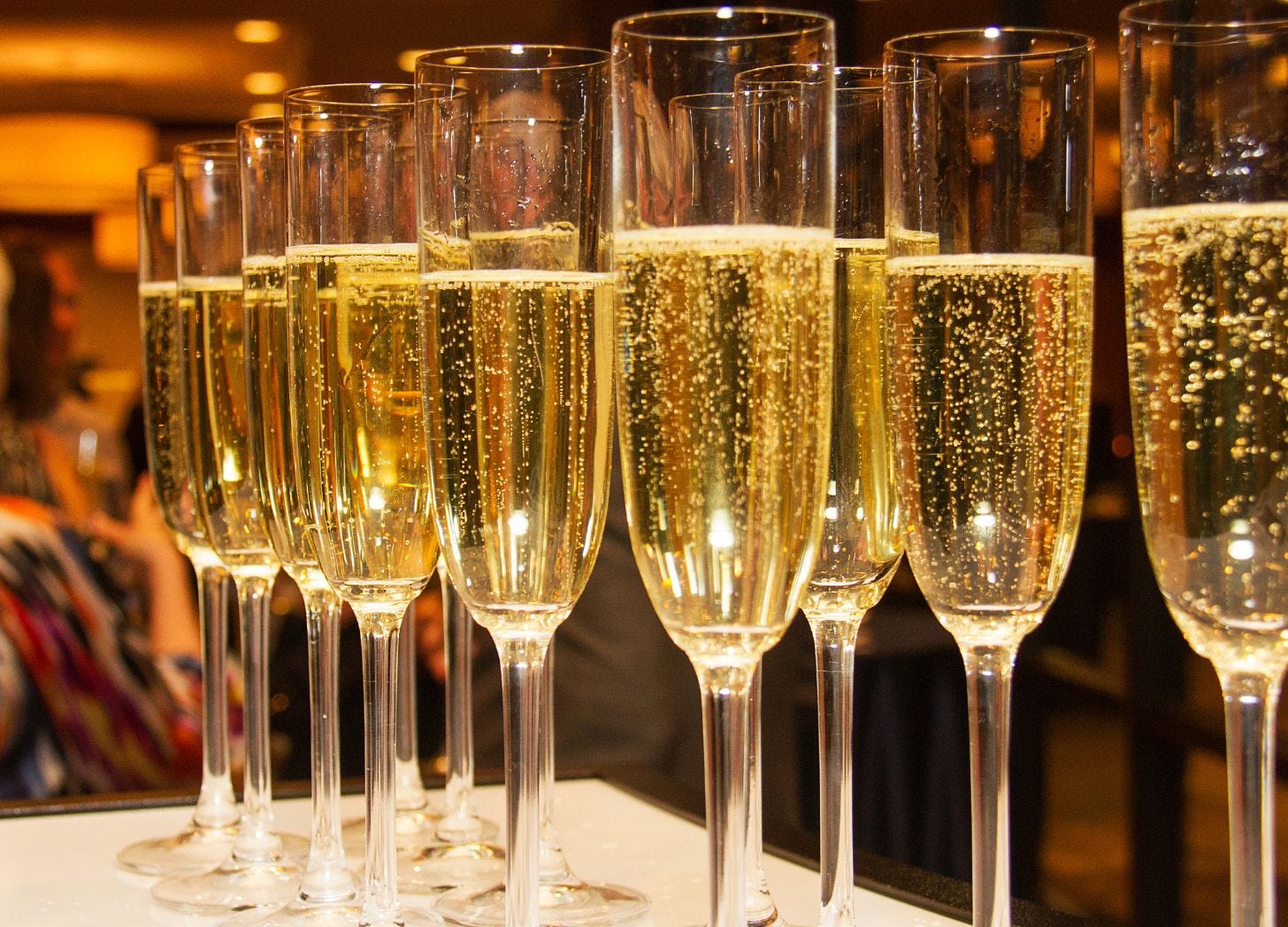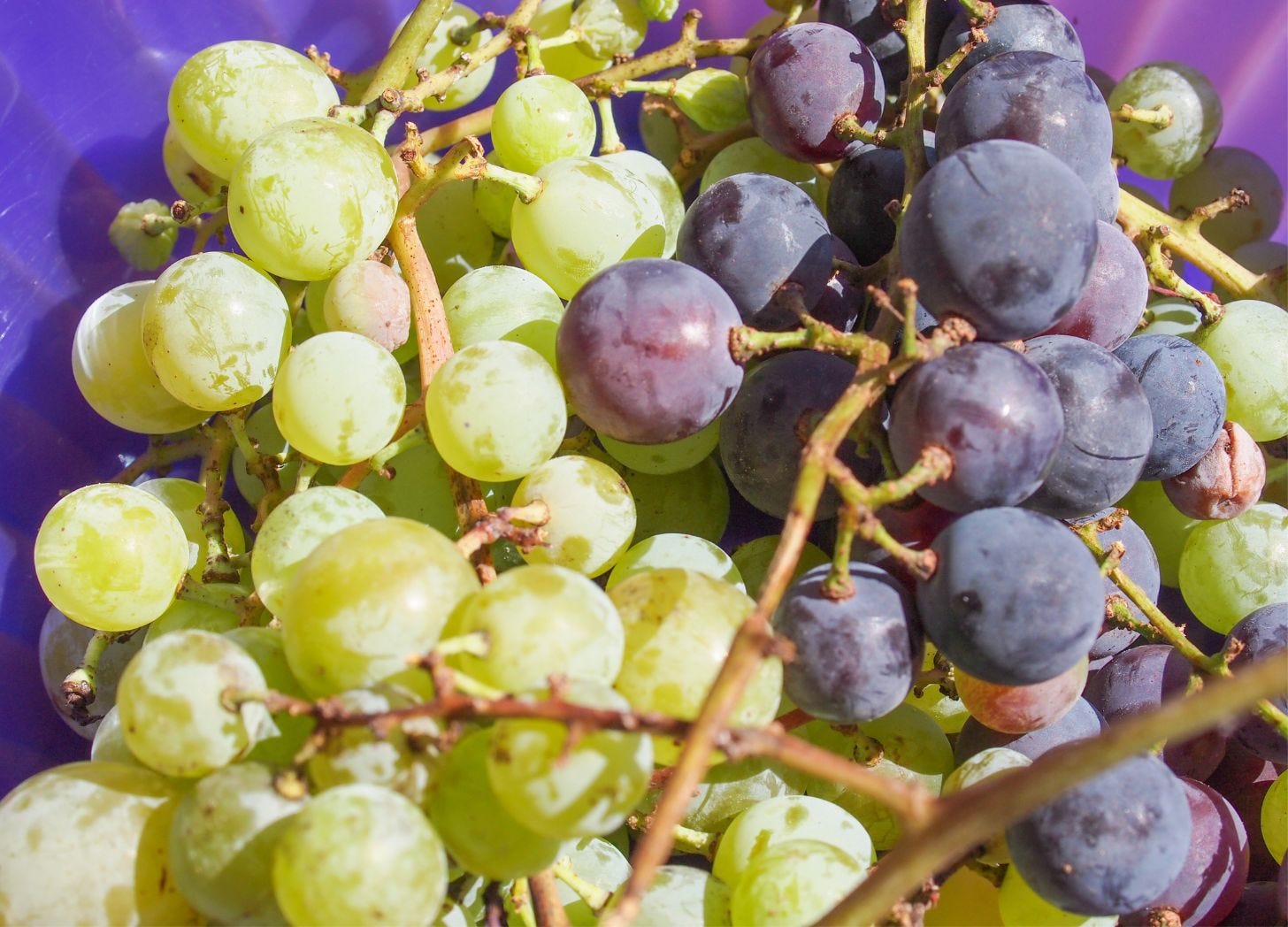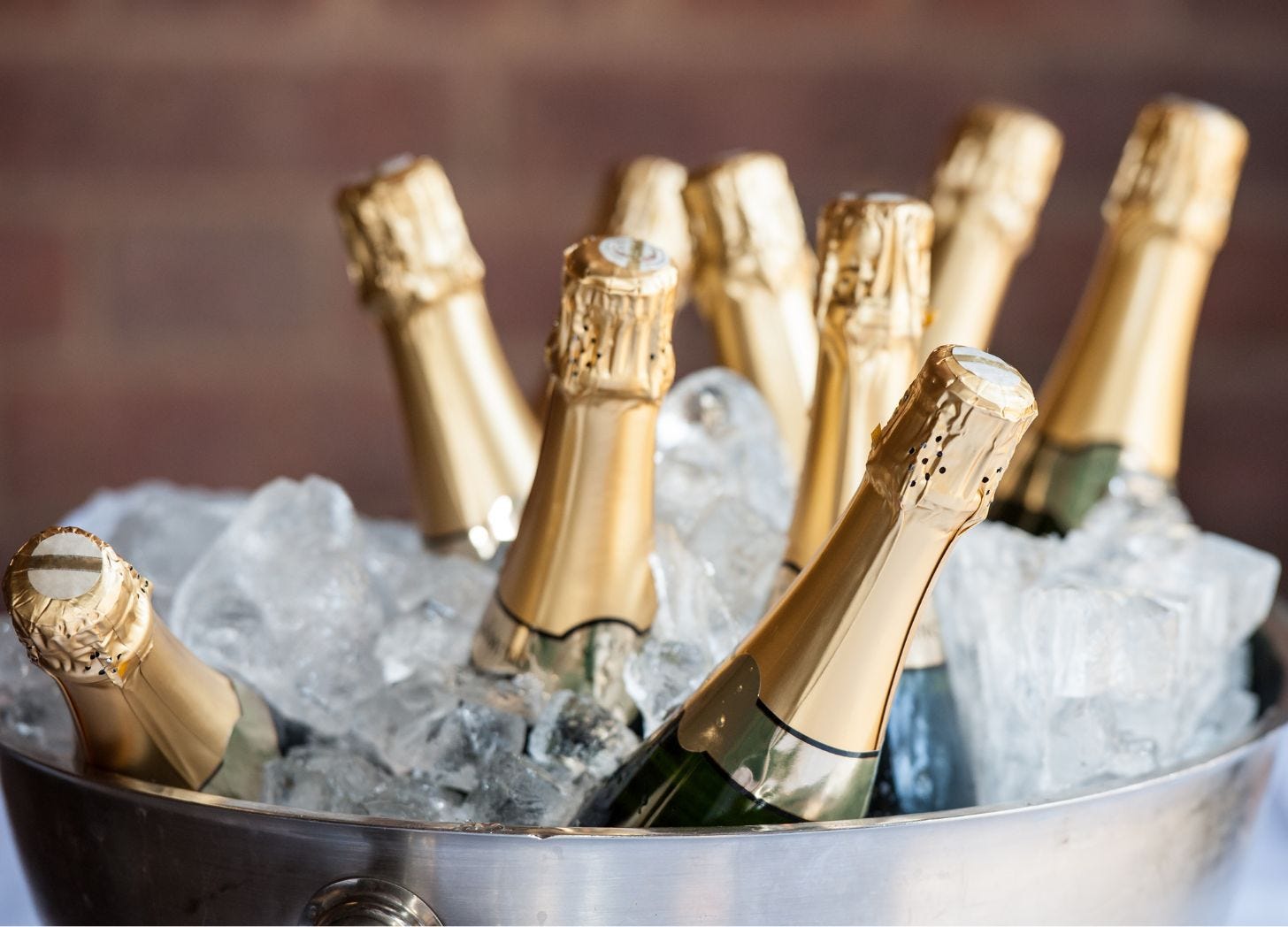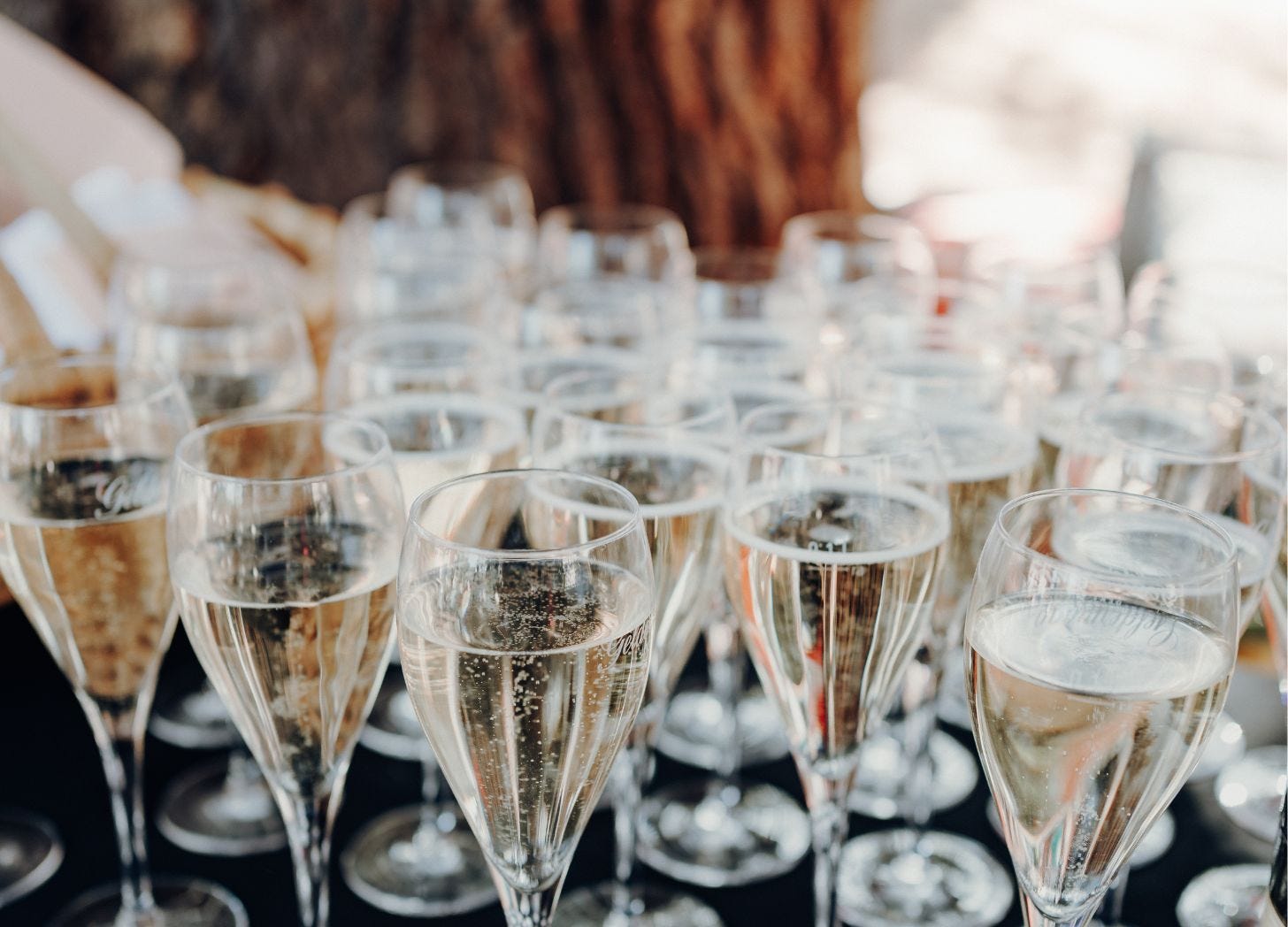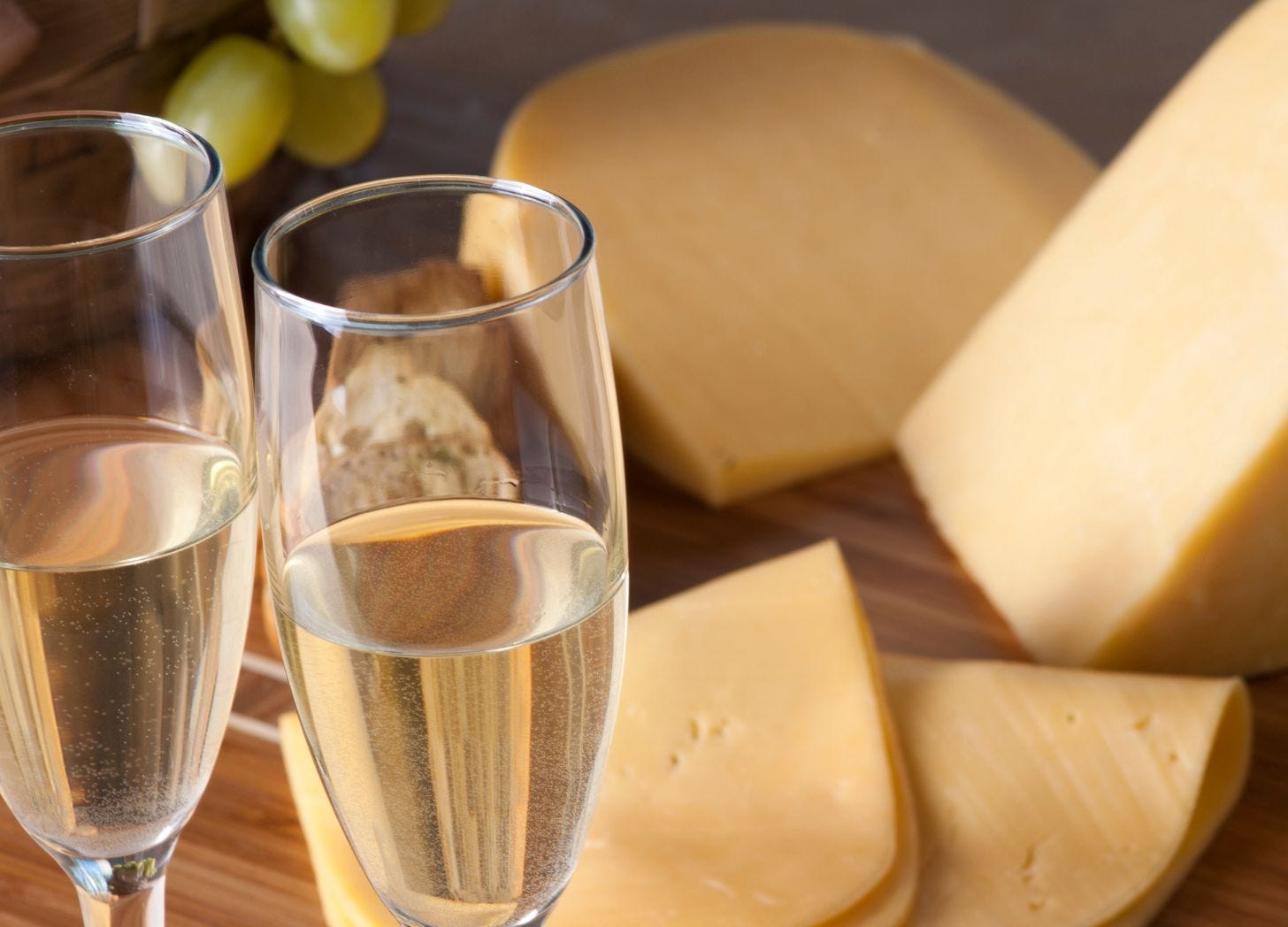Champagne 101
You are likely drinking lot of bubbly lately. Here's some knowledge to fill your cup. Cheers!
The party drink par excellence, New Year’s Eve is the perfect time for a Champagne refresh. There’s plenty to learn about France’s signature sparkling wine. I’ll hit the high points and FAQS.
As always, my goal is to give you something to talk about while you drink it. If sub-appellations and soil types are more up your ally, please let me know in the comments. I can talk about limestone all day!
Why do we Celebrate with Champagne?
Bubbly is synonymous with special occasions: New Years’ Eve parties, engagements and weddings, housewarmings, graduations and general good news.
Even in our under-21 days, sparkling apple cider was a frequent stand-in at high school proms. So, when did sparkling wine become the emblem of festivity?
NB: This article is about Champagne. Not Prosecco. Apples and oranges and to each her own.
For more on the difference and to go deeper on sparkling wine in general, check out Day 5 of my video series, ‘21 Days to Wine’ for more on all things sparkly.
I don’t do live events these days, but I still offer virtual wine tasting and custom wine education on zoom via my website. There are no stupid wine questions.
Winter is looming. A cozy night in with a bottle of wine and me talking out of your laptop screen costs less than a flight to Puerto Rico. You won’t get tan, but you will learn something that lasts a lot longer than a Caribbean glow. Just saying!
A Brief History of Bubbly
The Champagne today, or more technically, the Méthode Champenoise (the Champagne Method) is one of history’s happy accidents, like chocolate chip cookies and tarte tatin, and America.
For centuries, Burgundy was the most highly prized wine in France, but the winemakers of Champagne, just north of Burgundy were eager to get their name in the game.
Unfortunately (or fortunately) nature got in the way. When temperature dropped early in the season, fermentation in the cellars came to a halt, leaving still-intact yeast cells inside the wine bottles.
With the warm and sunny spring, the yeast came back to life with vigor.
Quick science: with alcoholic fermentation comes carbon dioxide, and bottles started to blow from the pressure.
Champagne is still wine that has some yeast and sugar added back in to cause a second fermentation, and tightly capped to keep those bubbles in the bottle.
The Cloistered Guardians of the Vine
Monasteries have historically kept wine growing and production alive throughout the Dark Ages and wartime.
Believe it or not, back in the 17th Century, Benedictine monk, Dom Pérignon was actually working on how to reduce effervescence in the wines of Champagne. He also studied the ideal grape varieties and pruning techniques to extract more elegant flavors.
Dom was one of the first to encourage the use of red grapes (primarily Pinot Noir), with a short press on the skins to add complexity to the assemblage (blend).
Three Main Champagne Grapes
Chardonnay, Pinot Noir, and Pinot Pinot Meunier. An additional four—Arbanne, Pinot Gris, Petit Meslier, and Pinot Blanc—have fallen by the wayside.
Most Champagne is a blend, but if you see Blanc de Blancs it’s strictly Chardonnay. Blanc de Noirs means it’s Pinot Noir and/or Meunier vinified without skin contact.
Blame the British for the Bubbly Craze
Faithful fans of the wines of Champagne, when bottles arrived on English shores and began their re-fermentation process in warmer weather, the fizz was met with fanfare, and soon became known as a desirable trait.
In 1662, the English scientist Christopher Merret cracked the code on what exactly was happening inside the bottles and determined that the addition of sugar prior to bottling could produce a build-up of carbon dioxide pressure in just about any bottle.
How to Keep Champagne Bottles from Exploding
The English loved their bubbly French wines so much, they developed stronger, thicker glass bottles to withstand the pressure.
Nowadays most sparkling wine bottles are built to last, but try not to shake things up too much, and definitely don’t leave your bottles in the freezer for too long. If you do opt for the freezer, wrap a wet towel around your bottle to hasten the chill.
On that note, what’s the fastest way to chill Champagne?
The ideal serving temperature for Champagne is 43°- 47°F (6-8° C).
The drier and younger it is, the cooler you want it for optimal fizz and bright fresh flavors. Vintage Champagne has more ample aromas, like caramel and buttered toast, so it can warm up a little and still taste magnificent.
The most efficient way to chill sparkling wine is an ice bucket and salt water. More quick science: salt lowers the freezing point of water, which melts the cubes and gets that ice bath, well, cold as ice.
Champagne Charms the Royal Courts of Europe and Beyond
And back to history.
Not be outdone by the British, the French, starting with Philippe II, Duke of Orléans, who served the sparkling wine at his nightly feasts, assumed the trend. By the mid-18th Century, Paris was abuzz with bubbly, and Champagne growers began to focus more heavily on the production of fizzy wine.
“Champagne! In victory one deserves it, in defeat one needs it.”
Napoleon Bonaparte
European royalty picked up on the trend as well. Champagne traveled with soldiers during the Napoleonic Wars, courtesy of Champagne merchant Charles-Henri Heidsieck, who was prepared to make sweeping sales regardless of the victors.
This is very likely the advent of Champagne’s status as a celebratory beverage. Napoleon himself famously declared “Champagne! In victory one deserves it, in defeat one needs it.”
Champagne landed in the happy hands of Prussian Kings, the Russian Tsar, the Royal Prince of Sweden and Norway, and as far as the royal courts of China and Siam (now modern Thailand). When the Russians occupied France, they ransacked Champagne cellars as tribute (who could blame them?) and later became one of Champagne’s largest markets.
Why Are Ships Christened with Champagne?
The use of Champagne as a token of battle victory may explain why ships are christened by breaking a bottle of bubbly before departing the harbor.
The tradition was first recorded in the late 19th Century, most notably with Queen Victoria’s christening of the HMS Royal Arthur. Superstition dictates that the bottle must break for good luck, whereas an intact bottle bodes poorly for the crew.
This ritual likely explains why athletes and race car drivers pour Champagne on themselves, and even recreational boat purchases are christened with a splash of Champagne, or something similarly sparkling.
Why is Sparkling Wine Luxurious?
During the 19th century, the idea of Champagne as a symbol of prestige trickled down to American and British high society as well, cementing the bubbly beverage as something reserved for the rich and for splurge-worthy events.
Birthday parties and anniversaries and retirement parties all call for something special, so sparkling wine it is.
Browse Champagne gifts for your next occasion.
Shine Bright like a Diamond: The Glimmer of the Shimmer
Could it also have something to do with Champagne’s diamond-like shimmer?
Maybe. Modern pop culture teaches us that everything from jewel-encrusted gold and high fashion labels to embossed bottles of wine and spirits à la Louis Roederer premiere Champagne Cristàl and Hennessy VS Cognac represent success and the highlife.
Why is Champagne served in a flute glass?
Because it’s pretty.
You can watch all those tiny bubbles (perlage) dancing in your glass and catch the light glinting off your white gold wine.
The narrow opening, which funnels aromas toward your nose. This mechanism makes the most of young, fresh subtle Champagne notes like citrus and lightly toasted bread.
Vintage Champagne, like aged red wines, need more room to breathe. Use a tulip-shaped glass, or go old school with a wide, shallow coupe.
Champagne wasn’t always dry and crisp. Its original iteration it was sweet and aromatic and worthy of wider cup.
What’s the best food to pair with Champagne?
Fried chicken is a classic pairing. The brightness and bubbles balance out any extra unctuousness, which cleans your palate and allows the spices and earthy flavor of the chick to sour. I’d level up with a Champagne rosé for extra balance and a hint of sweetness, as fried chicken can be salty.
Champagne also tastes great with aged and waxy cheeses like Mimolette and Gouda for exactly the same reason. Bubbles clear away fattiness leaving room for flavors to pop.
With caviar, skip Champagne
On its own it’s a vibe as much as it is a beverage. Celebratory and luxurious.
That being said, skip it with caviar. It’s too harsh. The same rush of fizz that skims the chicken fat from your palate will wash away caviar’s delicate and fascinating flavors. I’m a purist when it comes to caviar. Vodka. Straight up
Do we really need an excuse to pop a bottle of Champagne?
As Lily Bollinger, (1899-1977), of Bollinger Champagne said:
“I drink Champagne when I’m happy and when I’m sad. Sometimes I drink it when I’m alone. When I have company I consider it obligatory. I trifle with it if I’m not hungry and drink it when I am. Otherwise, I never touch it―unless I’m thirsty.”
*Tastefully may earn commissions from qualifying purchases.



